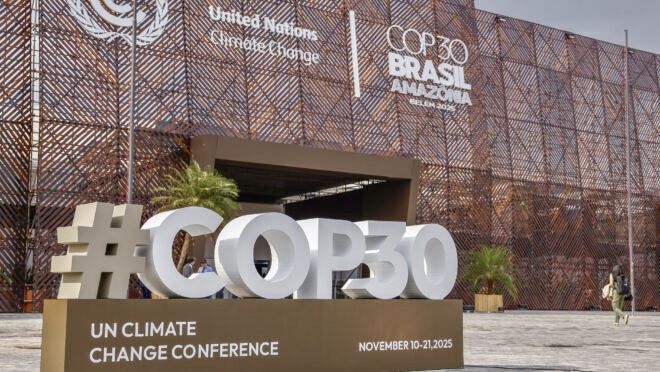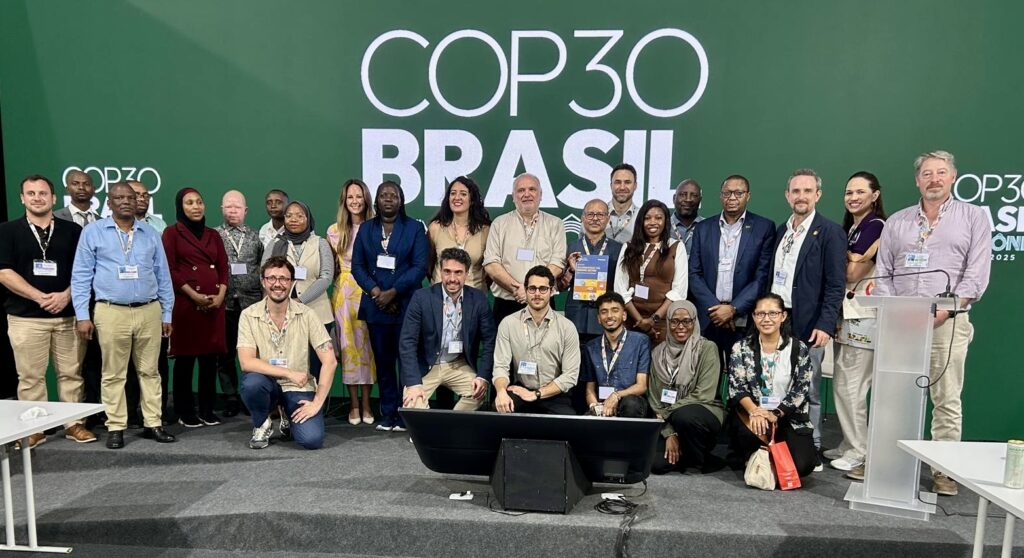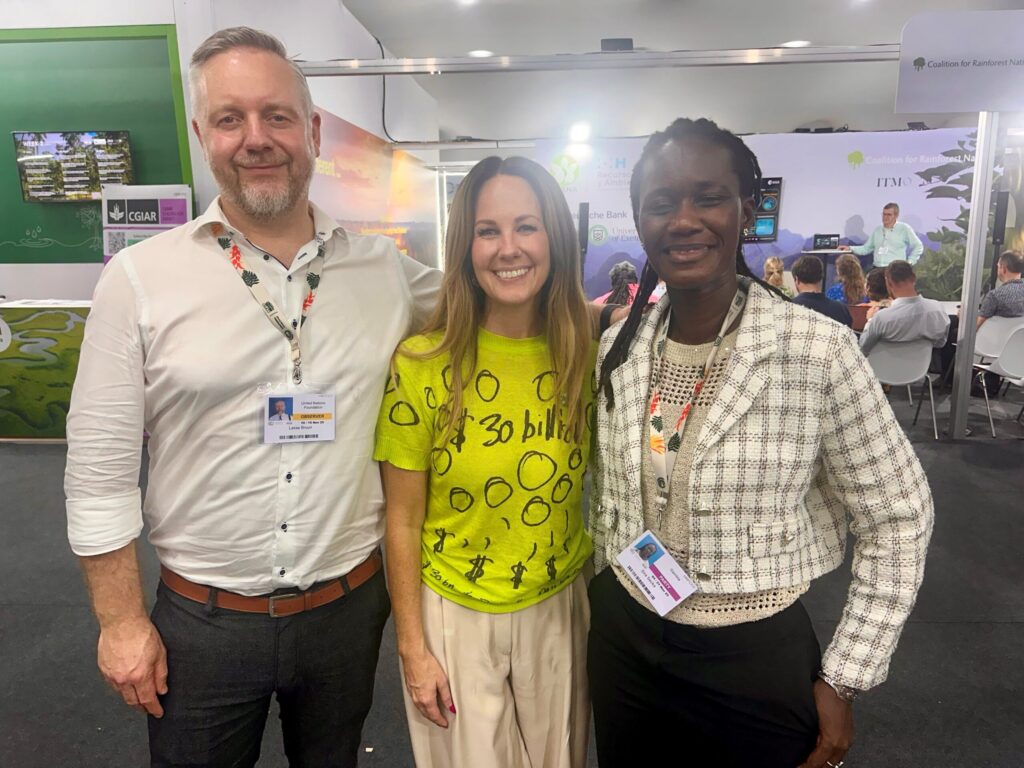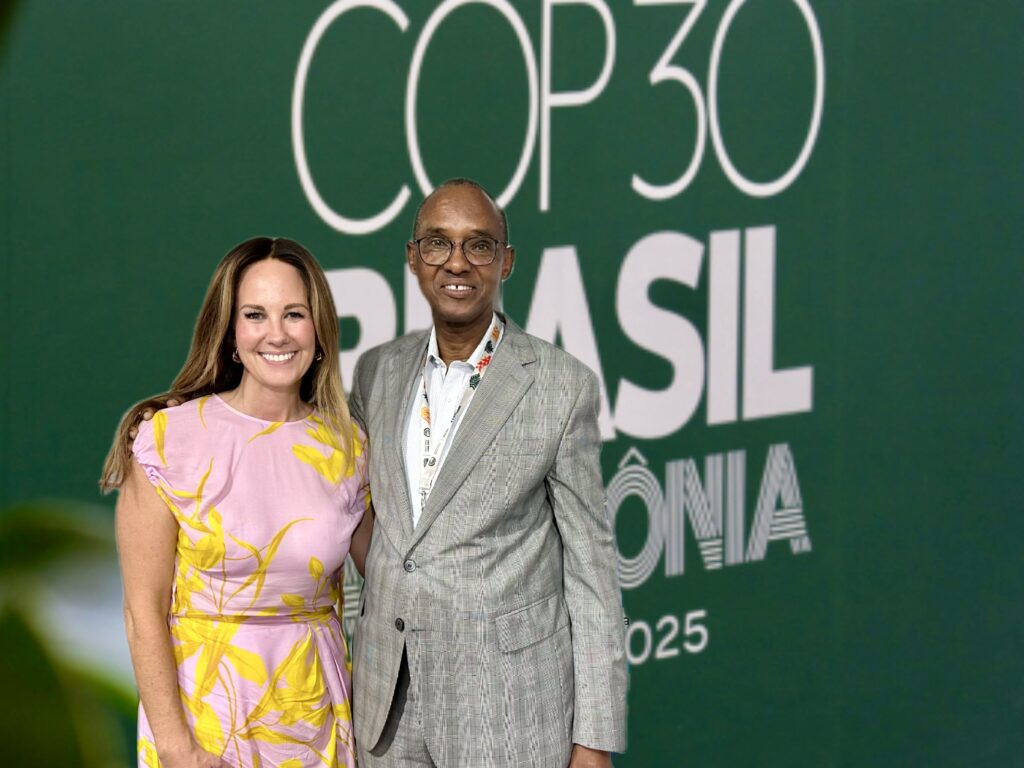Reflections on COP30: Momentum Is Real But Now We Need to Deliver for Clean Cooking

COP30 brought together leaders, activists, policymakers, investors, and community partners united by a shared push for a fairer and faster climate response. Clean cooking still isn’t the headline issue at COP, but it is no longer on the margins. You could feel that shift in the halls, in high-level meetings, on cross-sector panels, and across broader discussions on climate, nature, health, and resilience.
This momentum didn’t start in Belém. It has been building over several years. The COP30 Action Agenda carried it forward in a way that strengthens the foundation for real progress, even if the conference overall did not reach the ambitious level of implementation many had hoped it would.
Here are the COP30 developments that stood out most strongly for clean cooking, and what they mean for the path ahead.
Clean cooking is now understood as part of the climate and development agenda
The final Belém Political Package doesn’t mention clean cooking by name. Even so, the focus on universal access to clean energy, just transitions, and action on short-lived climate pollutants directly supports the sector. A few years ago, clean cooking struggled to be acknowledged at all. Now it is part of the policy conversations that shape national investment plans, NDC priorities, and climate-finance strategies.
Throughout COP30, ministers and senior officials spoke about cooking not as a side issue, but as part of their core economic and climate goals. That shift matters. It gives governments the political space to fully integrate cooking access into national plans. Our role is to help turn that political space into concrete action, and initiatives like the CCA-led Clean Cooking and Climate Consortium (4C) are providing countries with the technical tools, capacity, and support to do so.
 Participants of the “Showcase of Highlighted Results and Solutions: “Accelerating SDG 7 Goals through Universal Clean Cooking Access”
Participants of the “Showcase of Highlighted Results and Solutions: “Accelerating SDG 7 Goals through Universal Clean Cooking Access”
Black carbon finally received the attention it deserves
COP30 brought much more visibility to short-lived climate pollutants, including black carbon. Inefficient biomass-based cooking is one of the major sources of black carbon emissions, yet this link has rarely been highlighted at climate summits. This time, several countries reflected this issue in their national statements and side events.
This focus is an important step forward. Reducing black carbon delivers near-term climate benefits and opens the door to new forms of climate finance. It also strengthens the case for integrating clean cooking with forest protection, air-quality improvements, and health agendas. With better monitoring and reporting, the sector can unlock more finance and more political support.
Belém’s nature agenda helped elevate cooking access
Nature was at the center of COP30. Forest protection, community stewardship, and food-system resilience shaped much of the week’s discussions. Clean cooking sits within all of these themes. In many regions, cooking-fuel demand is a major driver of forest degradation. Clean cooking solutions reduce pressure on landscapes, protect biodiversity, and support local livelihoods.
This COP brought the nature and clean-cooking communities closer together. That convergence creates opportunities for joint programming and funding, especially in countries where deforestation and cooking-fuel use go hand in hand. Clean cooking is an untapped nature-based climate solution.
 Lasse Bruun (Director, Food and Climate, UN Foundation), Jillene Connors Belopolsky (CCA Chief of Staff and Chief External Affairs Officer) and Sira Secca (Agriculture Lead Negotiator, The Gambia)
Lasse Bruun (Director, Food and Climate, UN Foundation), Jillene Connors Belopolsky (CCA Chief of Staff and Chief External Affairs Officer) and Sira Secca (Agriculture Lead Negotiator, The Gambia)
Just transitions gave the sector another strong anchor
The Belém package reinforces that climate action must be fair, people-centered, and grounded in social inclusion. This framing supports clean cooking in a very direct way. Cooking is tied to women’s time and safety, children’s education, and household health and income. When countries talk about just transitions, clean cooking fits squarely within that conversation.
We need to lean into this framing when working with governments on enabling policies, financing mechanisms, and integrated planning across ministries. That also means designing solutions around real household and institutional needs. CCA’s User Insights Lab is helping fill this gap by generating the kind of trusted, user-centered data that countries and partners often lack. These insights give policymakers, investors, and businesses a clearer picture of what people want, what they can afford, and what actually works in practice.
People-centered transitions only succeed when they reflect real experience. Initiatives like the User Insights Lab can help ensure clean cooking policies and investments are grounded in the lives and priorities of the communities they are meant to serve.
Innovative and carbon finance must move faster and with integrity at the core
Scaling clean cooking requires new and diverse forms of finance. COP30 made clear that climate solutions must be investable, measurable, and trusted. Carbon markets are part of that equation, but they must meet high standards. The sector cannot afford another cycle of low-quality credits undermining confidence.
CCA and its 4C partners are helping strengthen this space. The newly available CLEAR methodology, currently under review by UNFCC and carbon standards bodies, provides a transparent, science-based approach to measuring emissions reductions from clean cooking. Paired with the Code of Conduct for Responsible Carbon Finance in Clean Cooking, it is helping set a higher bar for quality and integrity. These tools give countries and investors confidence that carbon finance can support real climate impact, not paper gains.
Clean cooking also needs new financial instruments, blended approaches, and partnerships that bring together concessional capital, private investment, philanthropic funding, and patient long-term finance. COP30 showed growing interest in this direction, but far more needs to move from concept to commitment.
 Singapore Pavilion event on “Clean Cooking and Carbon Markets: Ensuring High-Integrity Impact”
Singapore Pavilion event on “Clean Cooking and Carbon Markets: Ensuring High-Integrity Impact”
A major new entry point: clean cooking in schools
One of the most promising developments came outside the formal negotiations. A new multi-stakeholder Platform for Clean Cooking in Schools was launched to help countries transition school and institutional kitchens to cleaner, more reliable fuels and stoves. It highlights an issue that is often overlooked. In many countries, school meals are still prepared by burning firewood over open fires or inefficient stoves simply because there are no affordable and dependable clean options. The consequences are familiar: harmful smoke for cooks and students, rising fuel costs for already stretched school budgets, and mounting pressure on nearby forests.
The launch of the Platform for Clean Cooking in Schools brings much-needed visibility to institutional cooking, which has long been a gap in national energy planning. It also creates a clear opportunity for governments to think beyond household transitions and tackle clean cooking at scale through public institutions.
CCA’s own work on institutional cooking underscores the potential. In Kenya, for example, the Clean Cooking Delivery Unit housed in the Office of the President is supporting efforts to modernize institutional kitchens as part of the country’s push toward universal clean cooking. Similar opportunities exist across schools, hospitals, and other public facilities where predictable demand, centralized procurement, and strong public leadership can accelerate impact.
The new platform provides an important global signal. Our job now is to help partners turn that signal into practical, country-led implementation.
 Jillene Connors Belopolsky (CCA Chief of Staff and Chief External Affairs Officer) and Ambassador Ali Mohamed (Kenya’s Special Envoy on Climate Change)
Jillene Connors Belopolsky (CCA Chief of Staff and Chief External Affairs Officer) and Ambassador Ali Mohamed (Kenya’s Special Envoy on Climate Change)
The next year will be decisive
The momentum is real, but political recognition won’t automatically lead to delivery. Since clean cooking was not explicitly named in the Belém text, we risk losing visibility during implementation. Countries updating their NDCs this year have a major opportunity to correct that by including clear targets, strong implementation plans, and measurable indicators. National Clean Cooking Delivery Units need more resourcing and authority. Carbon markets need integrity. And the annual finance gap must be filled with a mix of public, private, concessional, and patient capital.
The tasks ahead are clear:
- Support governments to integrate clean cooking into energy, climate, and development plans.
- Mobilize a diverse capital mix for institutional and household transitions, including public finance, private investment, concessional funding, carbon finance, and patient long-term capital.
- Invest in national delivery capacity, data tools, and monitoring systems that make progress visible and accountable.
- Facilitate regional collaboration, capacity building, and knowledge exchange to replicate successful models.
- Strengthen coalitions across energy, education, food systems, nature, and health so implementation does not slip back into silos.
These steps will determine whether clean cooking becomes a true pillar of the global climate response.
Looking ahead, I’m more convinced than ever that this is our moment
Clean cooking has never had this level of global visibility, political support, or alignment across sectors. COP30 was not the finish line or the turning point. It was a clear signal that the world is finally ready to treat clean cooking as the energy, climate, development, health, and equity issue it has always been.
At CCA, we will continue working with governments and partners to turn this momentum into real results — in homes, in schools, and across entire economies. The window for impact is open. Now we need to move quickly, stay focused, and deliver at the scale people deserve.
